Today, we’ll be talking about the milestones your child hits on their way to standing independently, as well as what you can do to support this goal.
Use this guide to follow your baby’s Gross Motor Developmental Milestones from crawling to standing to walking. Get fun activities to help your baby stand.
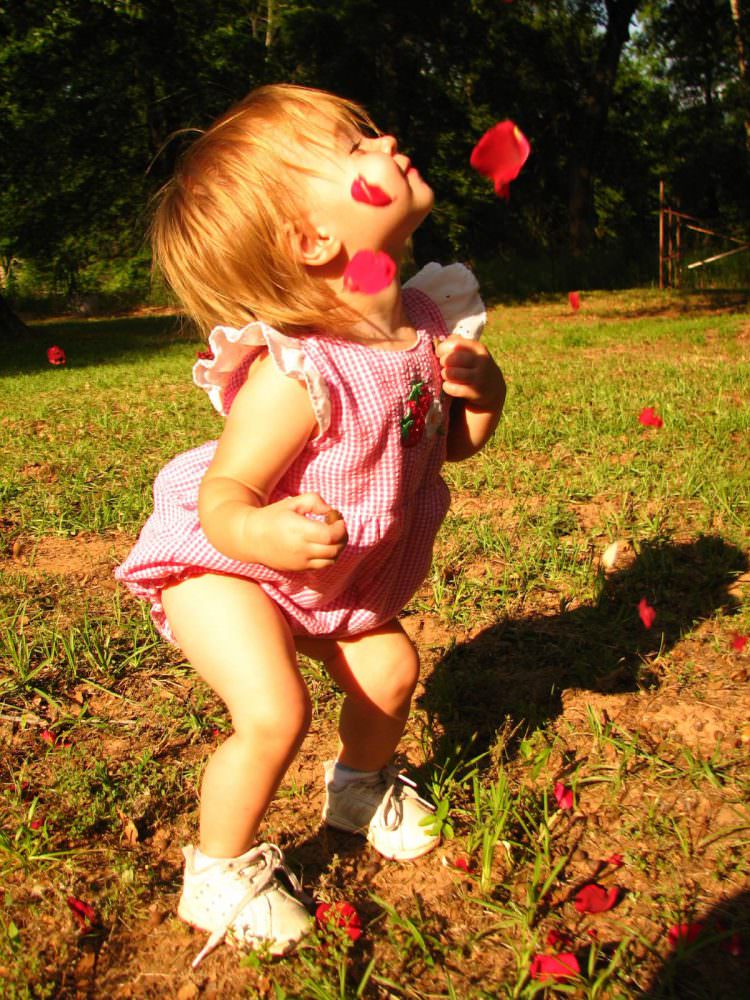
We often take it for granted, without really considering just how complicated standing is. It utilizes many of our body’s muscles and requires impressive fine tuning in order to balance. So when your baby is testing out their legs for the first time, they have quite a few things to master before they’ll be able to stand on their own!
Here’s what you should know about your baby’s development in this important step towards independence. We’ll give you some tips for what you can do to help them, as well as answer the frequently asked question, “At what age do babies stand?”
What You Need to Know About Standing
When talking about standing milestones, there are common terms that experts and healthcare professionals use often. Here are a few of them, and what they mean in the context of your baby’s development.
Postural Control
Postural control describes the involuntary motor, sensory, and integrative processes that allow your baby to maintain their posture against gravity. Their postural control will advance throughout their early lives, starting with lifting their heads when they’re newborns and culminating in being able to walk confidently.
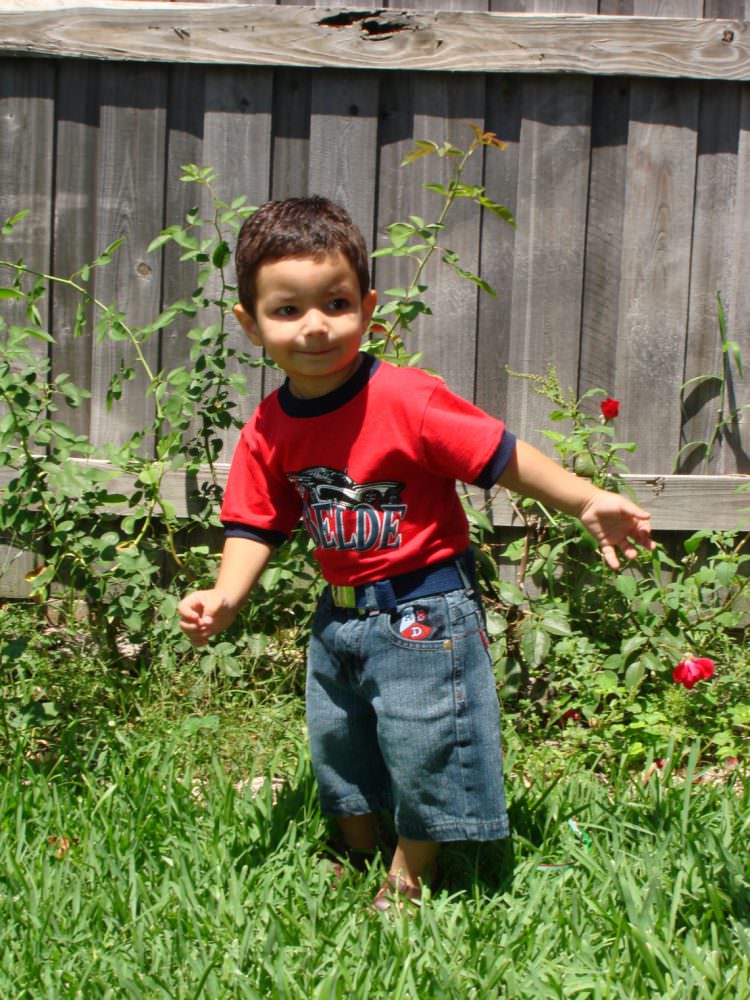
Weight Bearing
When your baby sleeps on their back or lies on their stomach, their weight is distributed through the length of their body. In order to learn to stand, they will have to be able to bear their full weight on their legs and feet.
Gross Motor Skills
Gross motor skills are those skills that engage the large muscles of the body and allow us to kick, lift objects, and walk. They require muscle tone and strength as well as the ability to plan and act out motor function. There are many important baby milestones that depend on the development of your child’s gross motor skills, standing being one of them.
How To Help Baby Stand Alone
Let’s have a look at the things you can do to promote good posture and weight bearing for your baby.
What Doesn’t Work
Before we start in on what you can do to help your baby learn, it’s worth noting what doesn’t help.
Baby Crawl and Stand Toys
Although walkers may seem like a nifty idea at first glance, they can actually delay your baby’s ability to stand independently by teaching incorrect standing position. In a walker, your child’s weight is pushed forward instead of being focused on their legs and feet. They’ll have to relearn this positioning before they can stand effectively. Walkers have also shown to be dangerous because newly mobile babies can now stumble into stairwells and reach things they weren’t previously able to touch.
Baby Exersaucers
While exersaucers are safer, they’re also not great for teaching baby proper balance and coordination. That being said, they allow parents a much needed break, and provide some positive stimulation through the toys that are usually incorporated in their design. This makes them useful, but they should be used sparingly so that they don’t encourage poor positioning and posture.
What Does Work
Help Your Baby Develop Muscle
A baby’s physical development is an important part of prepping them for getting on their feet. Standing engages most of your little one’s muscles, and so they won’t be able to get off the ground until they develop good muscle strength. There are many ways you can play with your baby to encourage this.
Starting a few weeks after birth and in their early life. Tummy time will help them develop core strength, which will be important for supporting them while standing and balancing. As your baby grows to five or six months of age, you can start exercising their legs by supporting them in a standing position and gently lifting them from squatting to standing and then back to squatting.
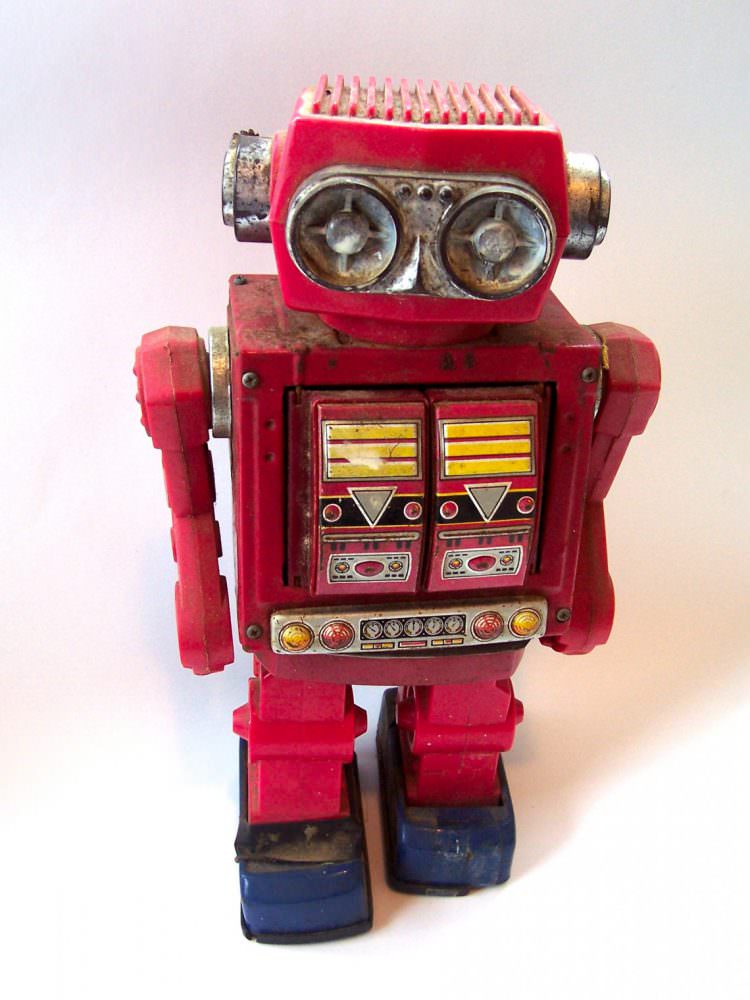
Encourage Your Baby to Explore
Placing baby’s favorite toys just out of reach can be the little bit of motivation he or she needs to start experimenting with standing. Place an object of interest on top of low, sturdy furniture and encourage your baby to pull up to stand.
Provide a Safe Environment
It’s important to remember that standing will give your baby much more access to things around your house than they had before. Take stock of what’s now in your baby’s reach and assess its safety. As well, make sure the floor is clear of any tripping hazards and that any furniture your baby may use to support themselves is sturdy and will not topple.
When Should Parents Worry?
Every baby learns at a different pace, and if your baby is a little behind the curve, it shouldn’t worry you. Rushing your child through their developmental milestones doesn’t benefit them, and may even deny them valuable opportunities to learn, grow, and discover. Continue to encourage them to learn and experiment and they will get there at their own pace.
Learning to stand too early should not concern parents either. As early as 6 months your baby might be trying out his or her legs! While it’s a common concern that early standers may become bowlegged, you shouldn’t worry. Many children experience bowlegged posture early in life, but it’s thought to be caused mainly by their positioning in the womb, and most children outgrow it. In fact, the best way to combat bowleggedness is to practice standing correctly, and to strengthen your child’s legs with exercise.
As always, if you become concerned about your baby’s progress or if they aren’t meeting other important milestones, talk to your pediatrician.
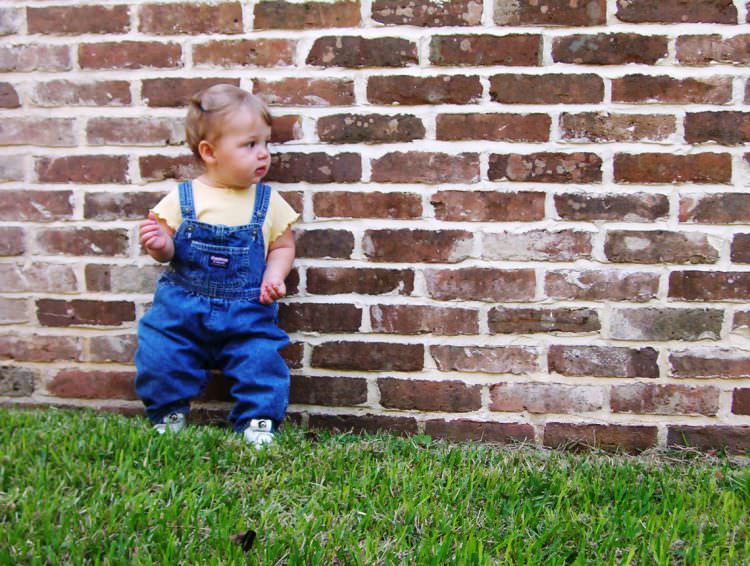
When Do Babies Start Standing?
So when do babies stand? All babies are different, so the timeline for your little one may vary – sometimes quite drastically – from the outline below. But it’s good to understand these developmental milestones so that you can choose appropriate learning activities for your child. These are the baby standing milestones you’ll observe in the order and ages that they typically appear.
Legs Support Some Weight
Development Milestone emerges from age 3 to 5 months.
At first, your child will be able to bear some of their weight on their legs for very short periods of time, but will be unable to hold an upright position without the help of a parent. Encourage their development by bringing them to a standing position either by holding their hands or under their arms, and let them push on a flat, hard surface with their feet.
Related Activities
Legs Support Most Weight
Development Milestone emerges from age 5 to 6 months.
Your child is able to support most of their weight with their legs, and now requires less help to stand. A parent will still need to hold on to the child to help them maintain balance. To see how much of your child’s weight their supporting independently, gradually give them less assistance until you are just holding on to support their upright position.
Related Activities
Bounces
Development Milestone emerges from age 6 to 7 months.
Now that your child has developed enough support to maintain a standing position for at least 5 seconds with assistance, they will begin to bounce while they’re standing. You can encourage this behavior by gently helping them along or by singing to them and encouraging them to dance. Don’t force this.
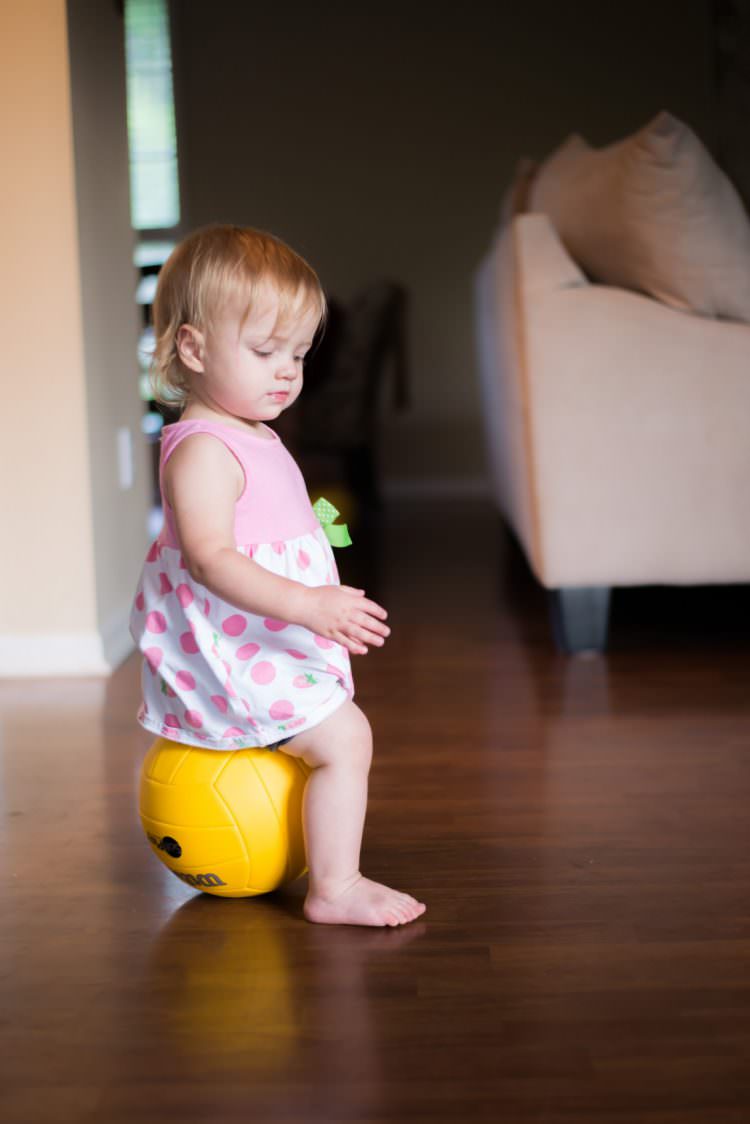
Uses Supports
Development Milestone emerges from age 6 to 11 months.
Your child will begin holding on to tables, chairs, and other furniture at their height in order to support them while standing. They may need help pulling themselves up at first, but they should be able to do this themselves before moving on to the next step. At this time, you should be making sure that anything on the floor that they could use to help them stand is sturdy enough not to topple onto them.
Briefly Stands Without Support
Development Milestone emerges from age 9 to 11 months.
At this stage, baby is just starting to experiment with balance. They should be able to stand on their own briefly after letting go of their support. If you do release your child while they are standing, keep your arms up and be ready to catch them as they lose balance.
Balances for Three Seconds
Development Milestone emerges from age 11 to 13 months.
At this stage, your baby should be able to stand by themselves for about three seconds before losing their balance. They may still stand with a wide gait and put their arms up in an attempt to maintain their balance. Your child is well on their way to good postural control.
Standing Independently
Development Milestone emerges from age 11 to 14 months.
Your child can now stand on his or her own, with enough balance to where they have use of their hands. He will no longer stand with a wide gait, and will appear more relaxed than before. Your baby should be able to maintain a standing position for at least ten seconds.
Bending, Looking Through Legs
Development Milestone emerges from age 14 to 16 months.
Your child has gotten onto his feet, and he will start to experiment with what he can do now that he is there. One of the first feats of balance will be bending over and looking backwards through his legs. Once he has gotten to this milestone, he should be able to stand back up without falling over.
Related Activities
Appropriately Responds to Changes in Balance
Development Milestone emerges from age 15 to 18 months.
If something disrupts your child’s balance, they should respond appropriately by moving their body and extremities in the opposite direction of the change. They are developing postural control and learning how to maintain their balance. You can observe this behavior in your child by holding onto their torso and very gently tilting them to one side.
Pushes a Ball Along
Development Milestone emerges from age 15 to 18 months.
While your child is not yet ready to kick while walking, they should be able to push a ball along by walking into it. You can support the development of this milestone by demonstrating kicking a ball and encouraging your child to follow your example. They should be able to move the ball forward by using either foot.
Balances on One Foot
Development Milestone emerges from age 16 to 17 months.
Your child will start to try to balance on one foot, but will still need help from a parent to do so. You can encourage this behavior by demonstrating standing on one foot to your child, and then offering to assist as the child tries it out for themselves.
Related Activities
Stoops to Pick Up Toy
Development Milestone emerges from age 16 to 23 months.
At this point your child has established enough balance to stoop down and pick up an item off the ground without falling over. Observe this behavior by asking your child to retrieve a toy or object off the floor. Their heels should not come off the ground, and they should be able to accomplish this without using a support.
Kicks a Ball
Development Milestone emerges from age 18 to 25 months.
Your child can shift his or her weight onto one leg in order to kick a ball in front of themselves. This requires the same skills as standing on one foot, as they are shifting their weight from one foot to the other. You can encourage this by kicking a ball to your child and asking them to kick it back.
Squats
Development Milestone emerges from age 20 to 21 months.
Your child can squat down to the floor from a standing position without putting their hands out in front of them to catch themselves. They should be able to do this for at least 10 to 15 seconds. You will likely observe this spontaneously while your child squats down to play with a toy on the floor.
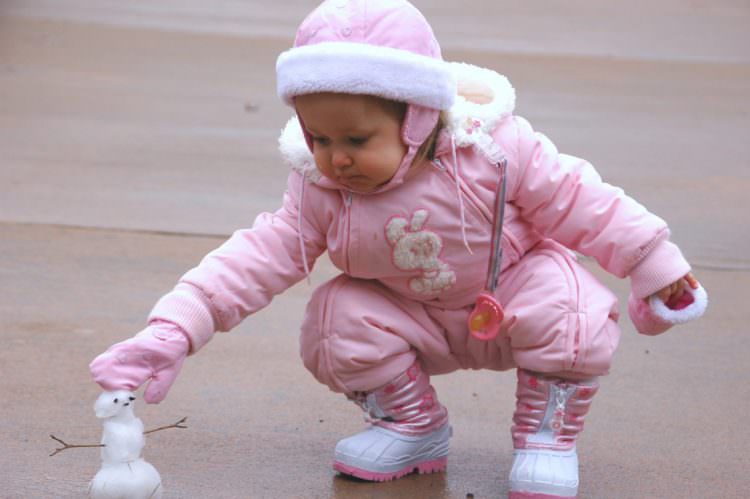
Related Activities
Stands From Lying Down
Development Milestone emerges from age 20 to 22 months.
At this stage in your baby’s development, your child should be able to get to a standing position from supine by rolling to one side. This will be different than their previous method, which involved getting on their hands and knees before pushing up to a standing position. You will likely see this behavior when your child stands up after a diaper change.
Related Activities
Voluntarily Stands on Tiptoes
Development Milestone emerges from age 23 to 26 months.
At this age, babies develop the ability to stand on their tiptoes without support. To encourage your child to do this, hold one of their favorite toys just barely out of reach. They should be able to do this for two or three seconds without help. He should not be getting into this position excessively, however.
Related Activities
Briefly Stands on One Foot
Development Milestone emerges from age 24 to 30 months.
Your child will begin briefly balancing on one foot without support. You may observe this behavior when your child lifts their leg to help you put their pants on, but you can encourage it by demonstrating for them. His opposite foot should stay planted on the floor.
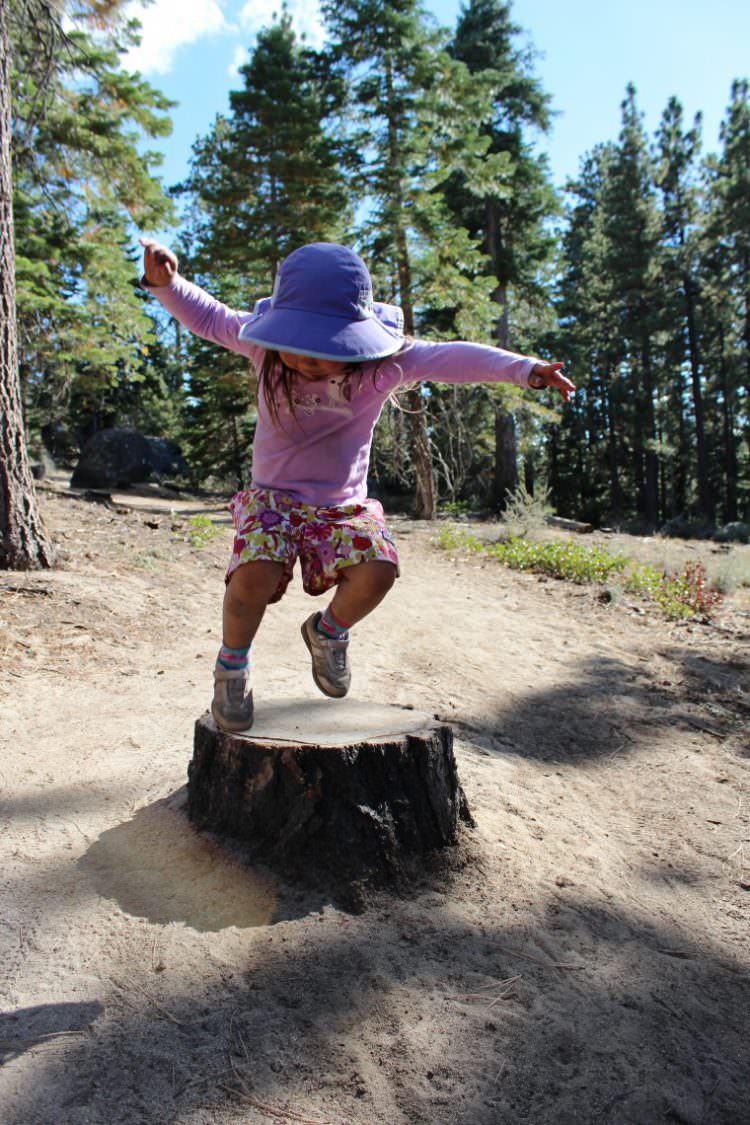
Related Activities
Imitate Large Movements
Development Milestone emerges from age 24 to 36 months.
Babies learn by watching their parents, and at this point you will notice your child imitating simple movements that they have observed. Your child should engage both sides of his or her body symmetrically and move the arms up, down, in front of, behind, and across the body. They should be able to duplicate actions quickly after observing them.
Related Activities
Sits Up to Stand
Development Milestone emerges from age 30 to 33 months.
In a step up from being able to roll to a stand, your child can sit up to a stand from laying on their back. This should involve very little if any sideways movement, but may involve pushing off the ground with their hands. You may observe this anytime your child gets up after laying on the ground.
Related Activities
What’s Next?
Is your baby already starting to toddle? Congratulations, you have a toddler on your hands!
Learn more about what you can expect as your child goes from standing to walking
Watching your baby achieve their developmental milestones can be exciting, and there are many other to look forward to. But they can also be a source of anxiety- many parents worry about their little ones reaching their milestones in a timely manner. We want to help parents like you by addressing these perfectly normal concerns. Interested in learning more about developmental delays? We have more information on them and what signs are cause for concern.
At ADAM and Mila, we’re always striving to provide parents with the best information, advice, and educational activities possible. To find more age appropriate learning activities for your child throughout the early years, take a look at our activity search form. We hope you found this article useful, and would very much appreciate it if you would share it with other families in your life that you feel could benefit! We love hearing from you, so please share your thoughts about this article in the comments, and let us know how we can improve to better meet your needs!





Hi my child is 10mnths and not standing on her own and with support for few seconds please help
Hi Lucy, it is probably a bit too early to be worried. The milestones described here on the site are averages, obviously, every child is unique and there will be some milestones that arrive early and some that arrive a bit later.
Do make sure to ask your pediatrician at the next checkup, he/she will be able to provide an assessment of your child’s gross motor development as a whole.
My baby walks by knee and feet turning in and sometimes by bending the knee. His feet is flat and he pronates moderately while walking. Anything to worry at this stage. He is 23 months old.
Hi Govind, hard for me to say – I suggest you check with your pediatrician at the next appointment.
MY BABY STANDS FIRMLY ON HER RIGHT FOOT BUT DOSEN’T STAND WELL ON THE LEFT, SHOULD I BE WORRIED?
SHE IS ALMOST 6MTHS OLD
Yes, you should have a pediatrician look into that. It’s very early still, could be nothing of course, but best to have it checked to be sure.